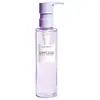What's inside
What's inside
 Key Ingredients
Key Ingredients

 Benefits
Benefits

 Concerns
Concerns

 Ingredients Side-by-side
Ingredients Side-by-side

Water
Skin ConditioningDecyl Glucoside
CleansingCaulerpa Lentillifera Extract
Beta-Glucan
Skin ConditioningSodium Hyaluronate
HumectantVaccinium Angustifolium Fruit
AstringentGlycolic Acid
BufferingLactic Acid
BufferingPhysalis Peruviana Fruit Extract
Skin ConditioningRubus Idaeus Fruit
AstringentArctostaphylos Uva-Ursi Leaf Extract
Skin ConditioningMorus Nigra Fruit Extract
Skin ConditioningVaccinium Myrtillus Fruit Extract
Skin ConditioningScutellaria Baicalensis Root Extract
AstringentPaeonia Suffruticosa Root Extract
Skin ProtectingGlycyrrhiza Glabra Root Extract
BleachingBetaine
HumectantSodium Chloride
MaskingGlycerin
Humectant1,2-Hexanediol
Skin ConditioningButylene Glycol
HumectantParfum
MaskingWater, Decyl Glucoside, Caulerpa Lentillifera Extract, Beta-Glucan, Sodium Hyaluronate, Vaccinium Angustifolium Fruit, Glycolic Acid, Lactic Acid, Physalis Peruviana Fruit Extract, Rubus Idaeus Fruit, Arctostaphylos Uva-Ursi Leaf Extract, Morus Nigra Fruit Extract, Vaccinium Myrtillus Fruit Extract, Scutellaria Baicalensis Root Extract, Paeonia Suffruticosa Root Extract, Glycyrrhiza Glabra Root Extract, Betaine, Sodium Chloride, Glycerin, 1,2-Hexanediol, Butylene Glycol, Parfum
Water
Skin ConditioningDecyl Glucoside
CleansingGlycerin
HumectantSodium Myristoyl Sarcosinate
CleansingSodium Cocoyl Isethionate
CleansingHydroxypropyl Methylcellulose
Emulsion StabilisingCocamidopropyl Betaine
CleansingCaprylyl/Capryl Glucoside
CleansingLauryl Lactate
EmollientOryza Sativa Extract
AbsorbentPropanediol
SolventSaccharomyces Ferment Lysate Filtrate
Skin ConditioningSalicylic Acid
MaskingNigella Sativa Seed Oil
EmollientCaprylyl Glycol
EmollientCamellia Sinensis Leaf Extract
AntimicrobialGlycyrrhiza Glabra Root Extract
BleachingCitric Acid
BufferingTetrasodium Glutamate Diacetate
Caprylhydroxamic Acid
Piper Nigrum Seed Oil
AstringentBoswellia Serrata Oil
MaskingFoeniculum Vulgare Oil
EmollientCitrus Limon Peel Oil
MaskingVaccinium Angustifolium Fruit Extract
Skin ProtectingPinus Sylvestris Oil
MaskingDaucus Carota Sativa Seed Oil
EmollientCeramide NP
Skin ConditioningCeramide AP
Skin ConditioningCeramide EOP
Skin ConditioningPhytosphingosine
Skin ConditioningCholesterol
EmollientSodium Lauroyl Lactylate
EmulsifyingSodium Hyaluronate
HumectantChlorophyllin-Copper Complex
AntioxidantCarbomer
Emulsion StabilisingXanthan Gum
EmulsifyingSpirulina Platensis Extract
Skin ProtectingBlue 1 Lake
Cosmetic ColorantTanacetum Annuum Flower Oil
MaskingWater, Decyl Glucoside, Glycerin, Sodium Myristoyl Sarcosinate, Sodium Cocoyl Isethionate, Hydroxypropyl Methylcellulose, Cocamidopropyl Betaine, Caprylyl/Capryl Glucoside, Lauryl Lactate, Oryza Sativa Extract, Propanediol, Saccharomyces Ferment Lysate Filtrate, Salicylic Acid, Nigella Sativa Seed Oil, Caprylyl Glycol, Camellia Sinensis Leaf Extract, Glycyrrhiza Glabra Root Extract, Citric Acid, Tetrasodium Glutamate Diacetate, Caprylhydroxamic Acid, Piper Nigrum Seed Oil, Boswellia Serrata Oil, Foeniculum Vulgare Oil, Citrus Limon Peel Oil, Vaccinium Angustifolium Fruit Extract, Pinus Sylvestris Oil, Daucus Carota Sativa Seed Oil, Ceramide NP, Ceramide AP, Ceramide EOP, Phytosphingosine, Cholesterol, Sodium Lauroyl Lactylate, Sodium Hyaluronate, Chlorophyllin-Copper Complex, Carbomer, Xanthan Gum, Spirulina Platensis Extract, Blue 1 Lake, Tanacetum Annuum Flower Oil
 Reviews
Reviews

Ingredients Explained
These ingredients are found in both products.
Ingredients higher up in an ingredient list are typically present in a larger amount.
Decyl Glucoside is a glucose-based surfactant and emulsion stabilizer. It is created by reacting glucose with the fatty acids from plants.
Surfactants help clean the skin by trapping oil, sebum, and dirt to be washed away. As an emulsion stabilizer, it stabilizes the ingredients in a product by preventing them from separating.
This ingredient is biodegradable and non-toxic. This ingredient is commonly found in baby shampoos.
Decyl Glucoside is sometimes used to stabilize the UV filter Tinosorb.
Learn more about Decyl GlucosideGlycerin is already naturally found in your skin. It helps moisturize and protect your skin.
A study from 2016 found glycerin to be more effective as a humectant than AHAs and hyaluronic acid.
As a humectant, it helps the skin stay hydrated by pulling moisture to your skin. The low molecular weight of glycerin allows it to pull moisture into the deeper layers of your skin.
Hydrated skin improves your skin barrier; Your skin barrier helps protect against irritants and bacteria.
Glycerin has also been found to have antimicrobial and antiviral properties. Due to these properties, glycerin is often used in wound and burn treatments.
In cosmetics, glycerin is usually derived from plants such as soybean or palm. However, it can also be sourced from animals, such as tallow or animal fat.
This ingredient is organic, colorless, odorless, and non-toxic.
Glycerin is the name for this ingredient in American English. British English uses Glycerol/Glycerine.
Learn more about GlycerinGlycyrrhiza Glabra Root Extract is an extract of the roots of Licorice. It has been found to have several benefits such as skin hydrating, conditioning, and soothing.
One component, glabridin, has extra potent antioxidant and soothing properties. It has also been found to block pigmentation from UVB rays in guinea pigs.
Licorice Root also contains a flavonoid. Flavonoids are a natural substance from in plants. Flavonoids also have antioxidant properties.
Another component, glycyrrhizin, has been found to have anti-inflammatory and antimicrobial benefits. This may make licorice root extract effective at treating acne. However, more research is needed to support this.
Liquiritin is one of the flavone compounds found in licorice. It has been found to help lighten skin by preventing tyrosinase from reacting with tyrosine. When the two react, protein is converted to melanin. Melanin is the substance in your body that gives your features pigmentation.
Learn more about Glycyrrhiza Glabra Root ExtractSodium Hyaluronate is hyaluronic acid's salt form. It is commonly derived from the sodium salt of hyaluronic acid.
Like hyaluronic acid, it is great at holding water and acts as a humectant. This makes it a great skin hydrating ingredient.
Sodium Hyaluronate is naturally occurring in our bodies and is mostly found in eye fluid and joints.
These are some other common types of Hyaluronic Acid:
Learn more about Sodium HyaluronateWater. It's the most common cosmetic ingredient of all. You'll usually see it at the top of ingredient lists, meaning that it makes up the largest part of the product.
So why is it so popular? Water most often acts as a solvent - this means that it helps dissolve other ingredients into the formulation.
You'll also recognize water as that liquid we all need to stay alive. If you see this, drink a glass of water. Stay hydrated!
Learn more about Water